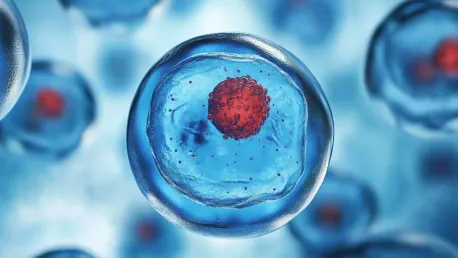Ivan Kairatov is a Biopharma expert, with deep knowledge of tech and innovation in the industry and experience in research and development. He joins us today to discuss Ori Biotech’s new Preferred Partner Network (PPN), the collaboration with various organizations, and the impacts on cell therapy development.
What is the primary goal of the Ori Biotech Preferred Partner Network (PPN)?
The primary goal of the Ori Biotech Preferred Partner Network (PPN) is to create a collaborative ecosystem that combines the expertise of academic medical centers (AMCs) and contract development and manufacturing organizations (CDMOs) in order to accelerate the development and commercialization of cell and gene therapies. By leveraging the strengths of these partners, Ori Biotech aims to provide best-in-class solutions that facilitate faster time to clinic, reduce comparability risks, and shorten development timelines.
Can you explain the significance of collaborating with academic medical centers (AMCs) and contract development and manufacturing organizations (CDMOs)?
Collaborating with AMCs and CDMOs is crucial because these organizations bring extensive expertise, infrastructure, and resources that are essential for the successful development and commercialization of advanced therapies. Academic medical centers contribute cutting-edge research, while CDMOs offer specialized manufacturing capabilities. This collaboration ensures that therapy developers have access to the best technologies and services, which ultimately enhances the quality and efficiency of cell and gene therapy development.
Who are some of the founding members of the Ori Preferred Partner Network in the United States?
The founding members of the Ori Preferred Partner Network in the United States include Charles River Laboratories, CTMC (a joint venture between MD Anderson Cancer Center and Resilience), ElevateBio, and Kincell, among other currently undisclosed partners.
What advantages do PPN members gain by using the new IRO® platform?
PPN members gain several advantages by using the new IRO® platform. It offers a flexible, streamlined, and closed workflow that integrates best-in-breed upstream and downstream technologies. This integration ensures optimal clinical and commercial success by enhancing efficiencies in the development process, minimizing risks, and accelerating timelines.
How does the IRO platform help accelerate cell therapy product development?
The IRO platform accelerates cell therapy product development by providing a comprehensive and automated environment that simplifies the complexities of manufacturing these therapies. It reduces the necessary manual interventions and ensures a consistent, high-quality output, thus speeding time to clinic and commercialization.
In what ways does the partnership with academic institutions and CDMOs help meet the goals of therapy developers?
Partnerships with academic institutions and CDMOs help therapy developers meet their goals by providing access to state-of-the-art technologies, expertise, and resources necessary for efficient development. These collaborations ensure that developers can leverage proven methodologies and high-quality manufacturing processes, ultimately improving the chances of successful therapy outcomes and faster patient access.
How do end-to-end solution providers typically restrict flexibility for therapy developers?
End-to-end solution providers typically restrict flexibility for therapy developers by binding them to specific technologies and services that may not be optimal for their particular needs. This can limit the ability to adapt to new advancements or choose the most suitable solutions for varying stages of therapy development.
Can you describe the key features of the IRO platform that make it flexible and streamlined?
The IRO platform is characterized by its ability to integrate seamlessly with other top-tier upstream and downstream technologies. This flexible integration supports a streamlined and closed workflow, which enhances efficiency and reduces risk throughout the development process. The platform’s adaptability allows therapy developers to customize their approach based on their unique requirements.
How does the integration of best-in-breed upstream and downstream technologies benefit the cell therapy development process?
Integrating best-in-breed upstream and downstream technologies benefits the cell therapy development process by ensuring that each component of the workflow operates at maximum efficiency and quality. This combination reduces bottlenecks, enhances the consistency of the product, and accelerates overall development timelines, making it possible to bring therapies to patients more quickly and effectively.
What recent technology partnerships have Ori Biotech announced, and what impact do they have on Ori’s mission?
Recently, Ori Biotech announced technology partnerships including collaborations with Fresenius Kabi. These partnerships are significant as they bring advanced technologies and solutions into Ori’s ecosystem, which help fulfill Ori’s mission of enabling widespread patient access to life-saving cell and gene therapies by improving development and manufacturing efficiencies.
How does the PPN contribute to Ori Biotech’s goal of enabling widespread patient access to cell and gene therapies?
The PPN contributes to Ori Biotech’s goal by assembling a network of expert organizations that collectively drive advancements in the field, improving the infrastructure and capabilities required to expedite therapy development and commercialization. This collective effort ensures that cutting-edge treatments are developed efficiently and made accessible to a broader patient population.
How does Ori Biotech plan to enhance flexibility for cell therapy developers through the PPN?
Ori Biotech plans to enhance flexibility for cell therapy developers through the PPN by allowing them to choose from a wide range of best-in-breed technologies and service providers. This flexibility ensures that developers can tailor their development strategies to their specific needs, avoiding the constraints imposed by traditional end-to-end solution providers.
What role does Charles River play in the Ori Preferred Partner Network?
Charles River plays a significant role in the Ori Preferred Partner Network by providing critical technology and expertise that supports the network’s mission. Their contributions help enhance the efficiency and quality of cell therapy manufacturing and development processes, contributing to more rapid and effective therapy outcomes.
How does CTMC’s capabilities integrate with the IRO platform, and streamline cell therapy manufacturing?
CTMC integrates its comprehensive solutions with the IRO platform to enhance its technology offerings. This integration streamlines cell therapy manufacturing by automating processes and providing a seamless transition from concept to clinic, ultimately speeding up the path to patient delivery.
How does ElevateBio BaseCamp contribute to the PPN’s mission?
ElevateBio BaseCamp contributes to the PPN’s mission by offering essential technologies and service solutions that accelerate the development, manufacturing, and commercialization of cell and gene therapies. Their involvement ensures that partners within the PPN can achieve their developmental milestones efficiently and effectively.
What specific technologies and service solutions does the PPN offer to its partners?
The PPN offers a range of technologies and service solutions including advanced manufacturing capabilities, automated workflow systems like the IRO platform, and access to cutting-edge research and expertise provided by the collaborating academic institutions and CDMOs. These resources collectively support the accelerated development and commercialization of cell therapies.
How does Kincell Bio’s technology simplify the manufacturing process for cell therapies?
Kincell Bio’s technology simplifies the manufacturing process for cell therapies by providing innovative solutions that reduce the complexities and costs associated with producing these treatments. Their technology enables more efficient workflows, lowering the barriers to widespread distribution and patient access to these critical therapies.
Can you discuss the cost benefits associated with the IRO platform and its impact on the broad distribution of cell therapies?
The IRO platform offers significant cost benefits by streamlining and automating various aspects of the cell therapy development process. This reduced complexity and efficiency lead to lower production costs, making it more feasible to distribute cell therapies widely and ensure that more patients can access these life-saving treatments.
How do you envision the PPN evolving in the future to further support the development and commercialization of cell and gene therapies?
I envision the PPN evolving by continuously integrating new technologies and expanding its network of expert partners to further enhance development and manufacturing processes. This evolution will support more streamlined workflows, higher efficiencies, and broader access to cutting-edge therapies, ultimately optimizing the path from concept to patient delivery while accommodating the dynamic nature of the biotech industry.









